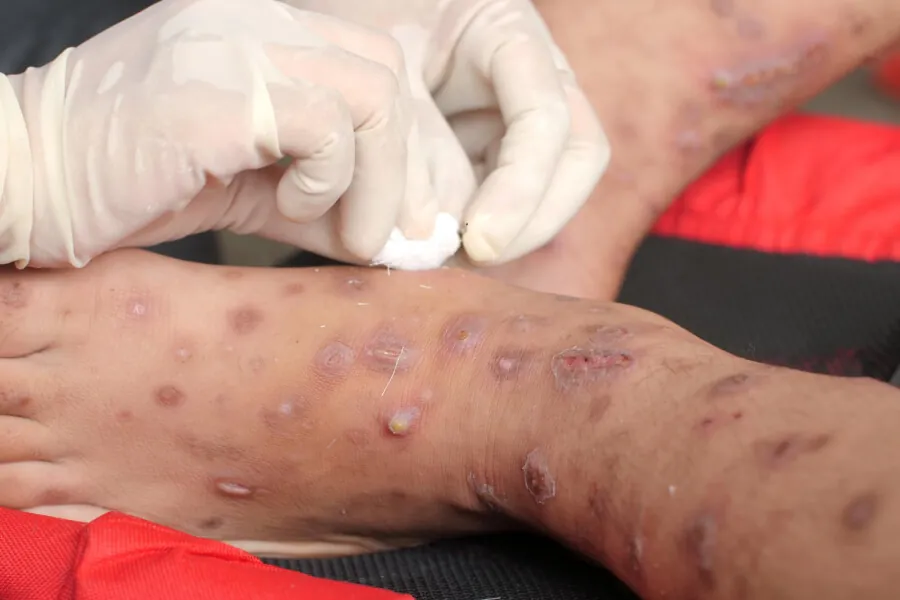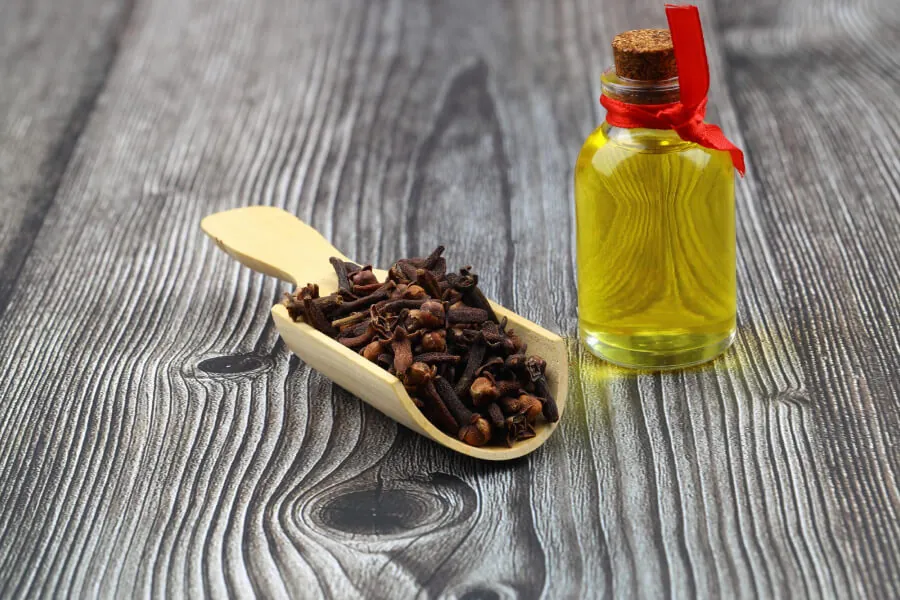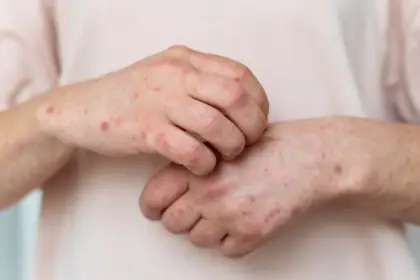What are Scabies?
Scabies is a skin infestation caused by the Sarcoptes scabiei mite. These microscopic mites burrow into the skin to lay eggs, leading to intense itching and a rash.
The condition is highly contagious and can spread through close physical contact or sharing bedding, clothing, and other personal items.
Definition and Symptoms of Scabies
Symptoms:
- Intense Itching: Especially at night
- Rash: Red, raised bumps or blisters
- Burrow Tracks: Thin, wavy lines made by mites under the skin
- Sores: Resulting from scratching the itchy areas
- Thickened Skin: In severe cases or with prolonged infestation
Why Home Remedies for scabies?
Home remedies for scabies are a popular choice for treating scabies due to their accessibility, affordability, and natural properties.
Many people prefer natural treatments to avoid potential side effects from prescription medications.
While home remedies for scabies can help manage symptoms and reduce mite populations, it’s essential to consult with a healthcare provider for a comprehensive treatment plan.
Benefits of Using Home Remedies for Scabies
- Natural Ingredients: Gentle on the skin and less likely to cause adverse reactions
- Cost-Effective: Often more affordable than prescription medications
- Accessibility: Readily available in most households or local stores
- Holistic Approach: Can be used in conjunction with other treatments for comprehensive care
Tea Tree Oil
Tea tree oil is renowned for its antimicrobial and anti-inflammatory properties. It is particularly effective in treating scabies due to its ability to kill mites and alleviate itching and inflammation.
How Tea Tree Oil Helps in Treating Scabies
- Antimicrobial Properties: Kills scabies mites and prevents secondary infections
- Anti-Inflammatory Effects: Reduces itching and swelling
- Healing Properties: Promotes skin healing and reduces scarring
Steps to Use Tea Tree Oil Effectively
- Dilute the Oil: Mix 10-15 drops of tea tree oil with a tablespoon of carrier oil (like coconut or olive oil).
- Apply to Affected Areas: Using a cotton ball, apply the diluted oil to the affected areas twice daily.
- Bath Soak: Add 10-15 drops of tea tree oil to your bathwater and soak for 20 minutes daily.
Note: Always perform a patch test before using tea tree oil to ensure you don’t have an allergic reaction.
Neem
Neem, also known as Indian lilac, is another powerful natural remedy for scabies. Its antimicrobial and anti-inflammatory properties make it effective in killing mites and soothing the skin.
Properties of Neem That Make It Effective Against Scabies
- Antimicrobial: Kills scabies mites and prevents secondary infections
- Anti-Inflammatory: Reduces itching and redness
- Healing Properties: Promotes skin regeneration and reduces scarring
Ways to Incorporate Neem in Your Scabies Treatment
- Neem Oil: Apply pure neem oil directly to the affected areas. Leave it on for at least 30 minutes before washing off with warm water. Repeat twice daily.
- Neem Leaf Paste: Crush neem leaves to make a paste. Apply this paste to the affected areas and leave it on for 30 minutes before rinsing. Do this daily.
- Neem Bath: Add a handful of crushed neem leaves to your bathwater and soak for 20 minutes daily.
Aloe Vera
Aloe vera is widely known for its soothing and healing properties. It can help reduce the itching and inflammation associated with scabies, providing much-needed relief.
Soothing Effects of Aloe Vera on Scabies Rash
- Anti-Inflammatory: Reduces swelling and redness
- Moisturizing: Hydrates the skin, preventing dryness and irritation
- Healing Properties: Promotes skin repair and regeneration
Methods to Use Aloe Vera for Scabies Relief
- Pure Aloe Vera Gel: Extract fresh gel from an aloe vera leaf and apply it directly to the affected areas. Leave it on for 30 minutes before rinsing off with warm water. Repeat several times a day.
- Aloe Vera and Turmeric Paste: Mix aloe vera gel with a pinch of turmeric powder. Apply the mixture to the affected areas and leave it on for 30 minutes before rinsing. Repeat twice daily.
Cayenne Pepper
Cayenne pepper contains capsaicin, which can help relieve pain and itching by desensitizing the affected area. While it might seem unusual, it can provide significant relief from the discomfort of scabies.
Spicy Properties of Cayenne Pepper for Scabies Treatment
- Analgesic: Reduces pain and itching by desensitizing nerve endings
- Anti-Inflammatory: Reduces swelling and irritation
- Antimicrobial: Helps prevent secondary infections
Precautions to Take When Using Cayenne Pepper
- Cayenne Pepper Paste: Mix cayenne pepper powder with a small amount of water to form a paste. Apply the paste to the affected areas and leave it on until it dries. Rinse off with warm water.
- Cayenne Pepper Bath: Add a teaspoon of cayenne pepper to your bathwater and soak for 20 minutes.
Note: Be cautious when using cayenne pepper, as it can cause a burning sensation. Avoid contact with eyes and open wounds.
Clove Oil
Clove oil is another effective home remedy for scabies due to its antimicrobial and analgesic properties. It can help kill mites and alleviate itching and pain.
Antimicrobial Benefits of Clove Oil Against Scabies Mites
- Antimicrobial: Kills scabies mites and prevents secondary infections
- Analgesic: Reduces pain and itching
- Anti-Inflammatory: Reduces swelling and redness
How to Safely Apply Clove Oil on Affected Areas
- Dilute the Oil: Mix 10-15 drops of clove oil with a tablespoon of carrier oil (like coconut or olive oil).
- Apply to Affected Areas: Using a cotton ball, apply the diluted oil to the affected areas twice daily.
Note: Always perform a patch test before using clove oil to ensure you don’t have an allergic reaction.
Additional Tips for Managing Scabies
In addition to using these home remedies for Scabies, there are several other steps you can take to manage scabies and prevent reinfestation.
Cleaning and Disinfecting Your Living Environment
- Wash Bedding and Clothing: Wash all bedding, clothing, and towels in hot water and dry them on a high heat setting to kill mites.
- Vacuum Thoroughly: Vacuum your home, especially areas where you spend a lot of time, to remove mites from carpets and furniture.
- Disinfect Surfaces: Use a disinfectant spray to clean surfaces that may have come into contact with mites.
Clothing and Bedding Care for Scabies Prevention
- Use Protective Covers: Cover your mattress and pillows with protective covers to prevent mites from burrowing into them.
- Avoid Sharing Personal Items: Do not share clothing, towels, or bedding with others to prevent the spread of scabies.
When to Seek Medical Attention
While home remedies for Scabies can be effective in managing scabies, there are times when professional medical treatment is necessary.
Signs That Indicate the Need for Professional Medical Treatment
- Persistent Symptoms: If symptoms persist or worsen after a few weeks of home treatment
- Severe Itching and Pain: If the itching and pain become unbearable
- Secondary Infections: If you develop signs of a secondary infection, such as increased redness, swelling, or pus
Importance of Consulting a Healthcare Provider for Severe Cases
Consulting a healthcare provider is crucial for severe cases of scabies. They can prescribe medications such as permethrin cream or oral ivermectin, which are more effective in treating the infestation.
Conclusion
Scabies can be a challenging and uncomfortable condition, but several home remedies for Scabies can provide relief and help manage the symptoms.
Tea tree oil, neem, aloe vera, cayenne pepper, and clove oil are among the most effective natural solutions you can try at home.
While these home remedies for scabies can be beneficial, it’s essential to maintain good hygiene, clean your living environment, and consult a healthcare provider for severe cases.
By combining natural remedies with professional medical advice, you can effectively treat scabies and prevent reinfestation.
FAQs
How Long Does It Take for Home Remedies for Scabies to Work?
Home remedies for Scabies can take a few days to a few weeks to show significant results. Consistency is key to achieving the best outcomes.
Can Home Remedies for Scabies Completely Cure Scabies?
Home remedies for Scabies can help manage symptoms and reduce mite populations, but they may not completely cure scabies. Professional medical treatment is often necessary for complete eradication.
Are Home Remedies for Scabies Safe for Everyone?
Most home remedies for Scabies are safe for the majority of people, but it’s essential to perform a patch test and consult with a healthcare provider, especially for pregnant women, young children, or individuals with sensitive skin.
How to Prevent Scabies from Spreading?
Preventing the spread of scabies involves maintaining good hygiene, washing bedding and clothing regularly, and avoiding close physical contact with infected individuals.







